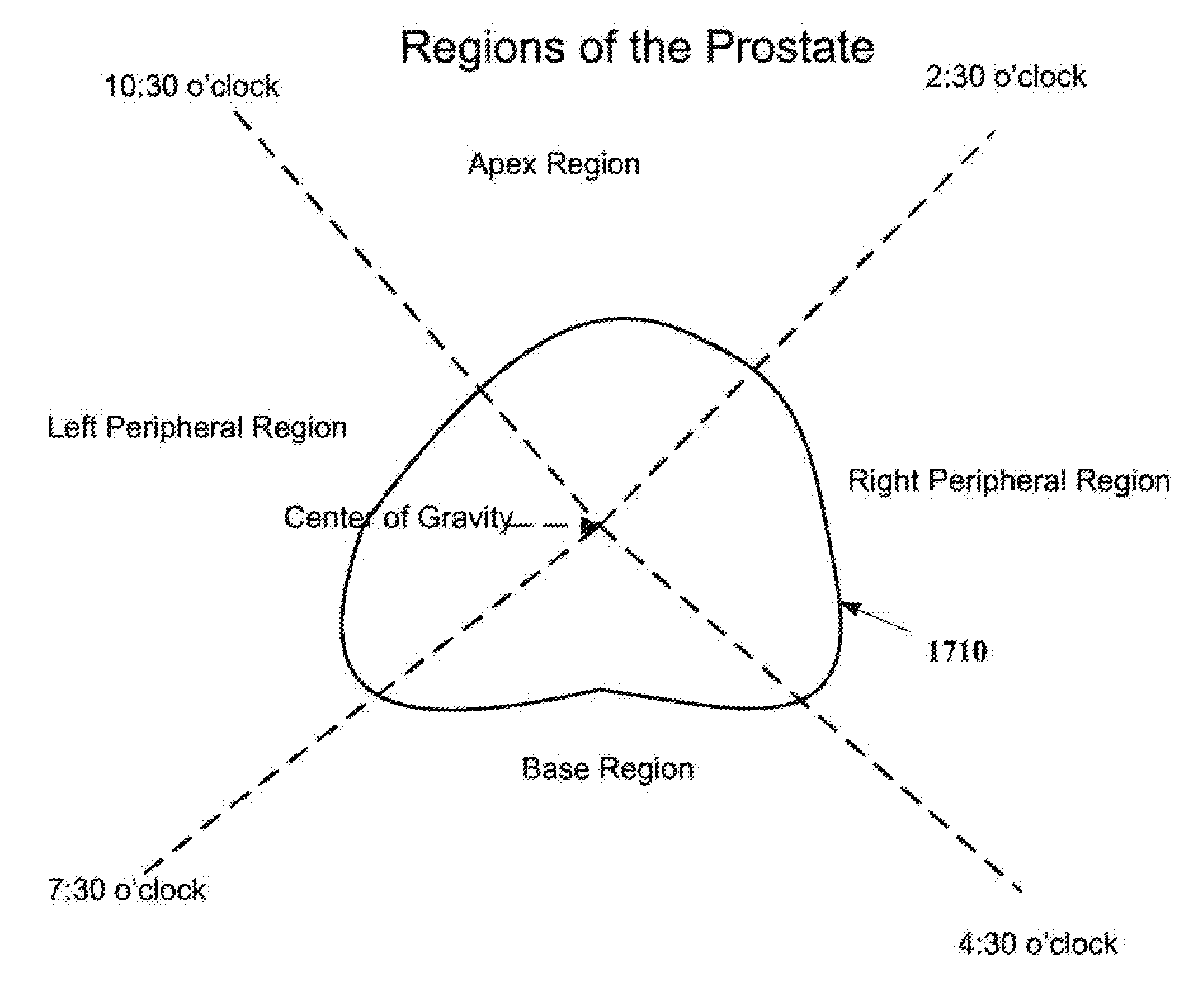Object recognition system for medical imaging
a medical imaging and object recognition technology, applied in the field of medical imaging, can solve the problems of difficult segmentation of ultrasound prostate images, impracticality of real-time imaging, and inability to generate segmented images while a trus remains positioned, so as to reduce processing requirements, enhance the speed of the segmentation process, and effectively remove the hump from the curvature
- Summary
- Abstract
- Description
- Claims
- Application Information
AI Technical Summary
Benefits of technology
Problems solved by technology
Method used
Image
Examples
Embodiment Construction
[0043]Reference will now be made to the accompanying drawings, which assist in illustrating the various pertinent features of the present disclosure. Although the present disclosure is described primarily in conjunction with transrectal ultrasound imaging for prostate imaging, it should be expressly understood that aspects of the present invention might be applicable to other medical imaging applications. In this regard, the following description is presented for purposes of illustration and description.
[0044]In the process disclosed herein, a prostate capsule volume computation is made with an automated segmentation method using 2-D ultrasound image. In this process, a 3-D ultrasound prostate image is sliced into the series of contiguous 2-D images, in either a rotational manner, about an axis approximately through the center of the prostate, with a uniform angular spacing (e.g., 3°), or in a parallel manner, with a uniform spacing (e.g. 1 mm). Segmentation for the 2D ultrasound im...
PUM
 Login to View More
Login to View More Abstract
Description
Claims
Application Information
 Login to View More
Login to View More - R&D
- Intellectual Property
- Life Sciences
- Materials
- Tech Scout
- Unparalleled Data Quality
- Higher Quality Content
- 60% Fewer Hallucinations
Browse by: Latest US Patents, China's latest patents, Technical Efficacy Thesaurus, Application Domain, Technology Topic, Popular Technical Reports.
© 2025 PatSnap. All rights reserved.Legal|Privacy policy|Modern Slavery Act Transparency Statement|Sitemap|About US| Contact US: help@patsnap.com



